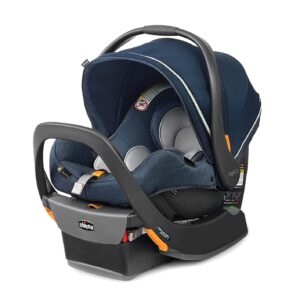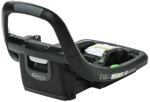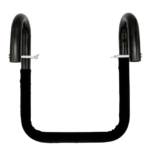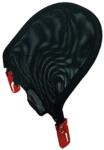What Are Anti-Rebound Bars?

![]()
![]()
![]()
![]()
![]()
Does My Rear-Facing Carseat Need An Anti-Rebound Bar?
 This is an exciting time in the carseat world! Carseat technology is changing quickly and we are seeing the benefits in safety features like load legs and anti-rebound bars (ARBs) becoming mainstream and affordable. We address what load legs are in this article, so let’s discuss what ARBs are here and their safety advantages.
This is an exciting time in the carseat world! Carseat technology is changing quickly and we are seeing the benefits in safety features like load legs and anti-rebound bars (ARBs) becoming mainstream and affordable. We address what load legs are in this article, so let’s discuss what ARBs are here and their safety advantages.
What Happens In A Crash
First you need to understand the physics of a crash. Remember back to science class where for every action, there’s an equal and opposite reaction. Now we also need to know that the most common type of crash is the frontal crash.
In crashes, everything in the vehicle will move toward the point of impact; in most cases, toward the front of the car. A rear-facing carseat will rotate down toward the floor—the vehicle cushion will compress and the seat belt (or LATCH belt, whichever you have used for installation) will stretch. Then the carseat will pivot around its belt path and come back up toward the back of the vehicle seat because of the energy initially released—physics in motion! Not to fear, however—a lot of that energy that went into the carseat heading down toward the front of the vehicle has been diminished by about 1/3 by the time the carseat impacts the vehicle seat.
An ARB will catch the carseat as it’s rotating into the back of the vehicle seat and stabilize motion caused by a side impact, dissipating the rest of the energy that’s left. It’s as simple as that!




An ARB can be molded into the carseat base or attached as a separate piece.
What About Other Types of Crashes, Like Rear-End and Side Impacts?
Does an anti-rebound bar help a rear-facing (RF) carseat with rear-end crashes? That type of crash is a little different with a RF carseat, in that the RF seat doesn’t react as a forward-facing (FF) carseat would in a frontal crash, like many people think. The RF carseat starts out much more reclined and travels a greater distance before reaching the back of the vehicle seat. And, just like in a frontal crash, the carseat cradles the child during the crash. If a child was FF in a frontal crash, the child would come forward out of the safety of the carseat shell due to harness stretch. The ARB stops the motion of a RF into the vehicle seat back in a controlled fashion.
Data simply isn’t available at this time to show whether ARBs are beneficial in side impacts.
How Does Rebound Affect Injury Outcomes?
Rebound doesn’t cause many injuries in the first place (remember that stat above about rebound energy being about 1/3 of the initial crash force?). We don’t have reports of leg or head injuries from rebounding, but the more we can control and spread force over a wider area, the less likely any injury will occur in the first place.
Is It Better to Have An Anti-Rebound Bar or A Load Leg?
A load leg can reduce crash forces 40-50%, which in turn greatly reduces rebound, so a load leg is the better choice as a safety feature and they are on carseats in all price ranges. However, not all vehicles and seating positions allow for the use of a load leg, which is why ARBs are also available. It’s all about the energy management!
Here’s a list of carseats that have anti-rebound bars or anti-rebound height built into their bases separated out into rear-facing only infant seats and convertible/all-in-one carseats. We use affiliate links; each time you click a link, a small percentage of your purchase goes to support our blog at no extra cost to you. Thank you for following us and sharing our links with your friends and family!
Carseats with Anti-Rebound
Scroll → to see full table
Rear-Facing Only Infant Seats
Convertible or All-in-One Carseats






